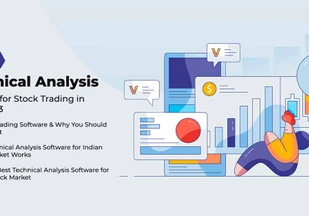Summary: The significant difference between direct and indirect taxes is that direct taxes are paid by individuals and businesses and the latter one is paid by end consumers. Let’s find out more about direct tax and indirect tax below.
In India, whether you are making profits or purchasing a good or service, as an individual you are obliged to pay the tax. Taxes are an important recurring fee and source of revenue for the government. Moreover, they are instrumental in building the economy of the country.
In India, the taxes are categorized into two categories: Direct and Indirect taxes. In this article, we will learn about direct and indirect tax and how they are different from each other.
Table of Contents
What Are the Key Differences Between Direct Tax and Indirect Tax
Direct taxes are paid directly to the government whereas indirect taxes are paid to the government through intermediaries. Similarly, the liability of direct taxes is nontransferable whereas indirect tax liability can be transferred.
Here are some other differences between direct tax and indirect tax below.
| Metrics | Direct Tax | Indirect Tax |
| Levied On | Income and profits | Goods and services |
| Taxpayer | Individuals and businesses | End-consumers of goods and services |
| Tax Rate | Depends on income and profits | Equal for everyone |
| Tax Type | Progressive | Regressive |
| Tax Collection | Complex | Easy |
What is Direct Tax?
Direct tax is a kind of tax where the tax is paid directly by the taxpayer to the authority that levied tax. Under the direct tax, the taxpayer bears the tax burden and cannot transfer the liability to any other entity. In India, the Central Board of Direct Taxes (CBDT) is authorized for the collection and management of direct taxes.
Types of Direct Taxes in India
There are different types of direct taxes levied in India including wealth and estate tax. Some other direct taxes include:
- Income Tax: It is the most common type of direct tax which is levied on an individual’s income that he earns during a financial year. The tax is calculated and paid based on the income tax slabs created by the IT department.
- Capital Gains Tax: This type of tax is levied on the profit gained from the property sale. The term property comprises residential property, bonds, stocks, precious metal, and so on.
- Corporation Tax: The corporation tax is levied on the profits earned by an organization during a financial year.
- Securities Transaction Tax (STT): This tax type is levied on the sale and purchase of securities that are listed on India’s stock exchanges. The tax needs to be paid irrespective of any gains made from the transaction.
Merits and Demerits of Direct Tax
Direct taxes help in maintaining social equality with defined tax slabs. However, there are higher chances of tax evasion associated with direct taxes. Here are some other merits and demerits associated with direct taxes.
Merits of Direct Taxes
- Increases the revenue for government
- Assists in curbing inflation
- Maintains economic stability by ensuring the flow of funds
- Demerits of Direct Taxes
- The collection procedure of direct taxes is complicated
- These taxes restrict investment
What is Indirect Tax?
The indirect tax is levied on goods and services than the income and profits. This type of tax is passed onto customers by the retailer as a part of the purchasing price of goods and services. Therefore, end consumers are the ones who actually pay indirect taxes.
Types of Indirect Taxes in India
- Goods and Services Tax (GST): GST is the most common type of indirect tax that has replaced several indirect taxes including service tax, value added tax, purchase tax, excise duty, and much more. It is a unified indirect tax levied on the goods and services based on the tax slabs defined by the India’s GST council.
- Customs Duty: Custom duty is levied on the import and export of goods. This tax is compulsory to be paid irrespective of whether the goods are brought or sold by air, land, and sea.
- Sales Tax: This type of tax is levied by tax authorities on the sales of goods and services.
Merits and Demerits of Indirect Tax
The collection of direct taxes is quite easy; however, they make the goods and services expensive. Here are some other merits and demerits associated with indirect taxes.
Merits of Indirect Taxes
- Every person pays equal amount of taxes
- Helps in generating more revenue through goods and services
- Making payments is quite easy for taxpayers
Demerits of Indirect Taxes
- It is regressive in nature and might become a burden for lower class people
- It might impact the purchasing power of consumers
Comparison Between Direct and Indirect Taxes
There are several differences between direct and indirect taxes in terms of multiple features. Let’s find out about these differences in detail below:
- Tax Nature: The direct taxes are progressive in nature, implying they will increase as the income of the person increases. Whereas indirect taxes are regressive in nature implying that they will not increase within an increase in the person’s income.
- Rate of Payment: The rate of payment for direct taxes is determined by the government based on the person’s profits and income. On the other hand, the rate of payment for indirect taxes is fixed for everyone.
- Payment Entity: Indirect taxes are paid by individuals and businesses based on their income slab. Whereas indirect taxes are paid by the end consumers who avail themselves of the services or purchase the goods.
- Transfer of Liability: The liability of direct taxes cannot be transferred because it depends on the person’s income slab. On the contrary, the liability of indirect tax is passed to consumers as it is charged during sales and is paid by consumers.
Role of Tax Management Software in Managing Taxes
Tax management software can help you a lot in managing and filing direct taxes. Whether you want to file corporate tax, income tax or capital gain tax, tax management software can help you file all these taxes.
With this type of software, you can automate tax calculations, file your returns, manage tax-related data, create tax reports, etc. Moreover, you can analyze tax-related reports to meet the tax regulations and compliance requirements.
Conclusion
There are two types of taxes; direct and indirect taxes as enumerated in the article. Both of them are important for managing the overall economy of the country.
Therefore, the collection of these taxes is essential for the government and for the well-being of the country. These taxes are collected by the central and state governments as per the tax levied.
FAQs
Is the rate of payment different for direct and indirect taxes?
Yes, for direct taxes, the tax rate is based on the income and profits of individuals. However, in indirect taxes, the tax rate is equal for every person.
What is the key difference between direct and indirect tax?
The key difference between direct and indirect tax is that direct tax is levied on income and profits. Whereas indirect tax is levied on goods and services.
Is GST a direct or indirect tax?
GST is an indirect tax which is imposed on goods and services.
What are the examples of direct tax?
Income tax, capital gains tax, and securities and transaction Tax (STT) are some of the direct tax examples.
What are the different types of indirect taxes?
Goods and services tax (GST), customs and excise duties, and value added tax (VAT), are some of the indirect tax examples.
Who governs and administers direct tax in India?
The direct tax is governed by the Central Board of Direct Taxes (CBDT).
Who governs and administers indirect tax in India?
The direct tax is governed by the Central Board of Indirect Taxes and Customs (CBIC).






























